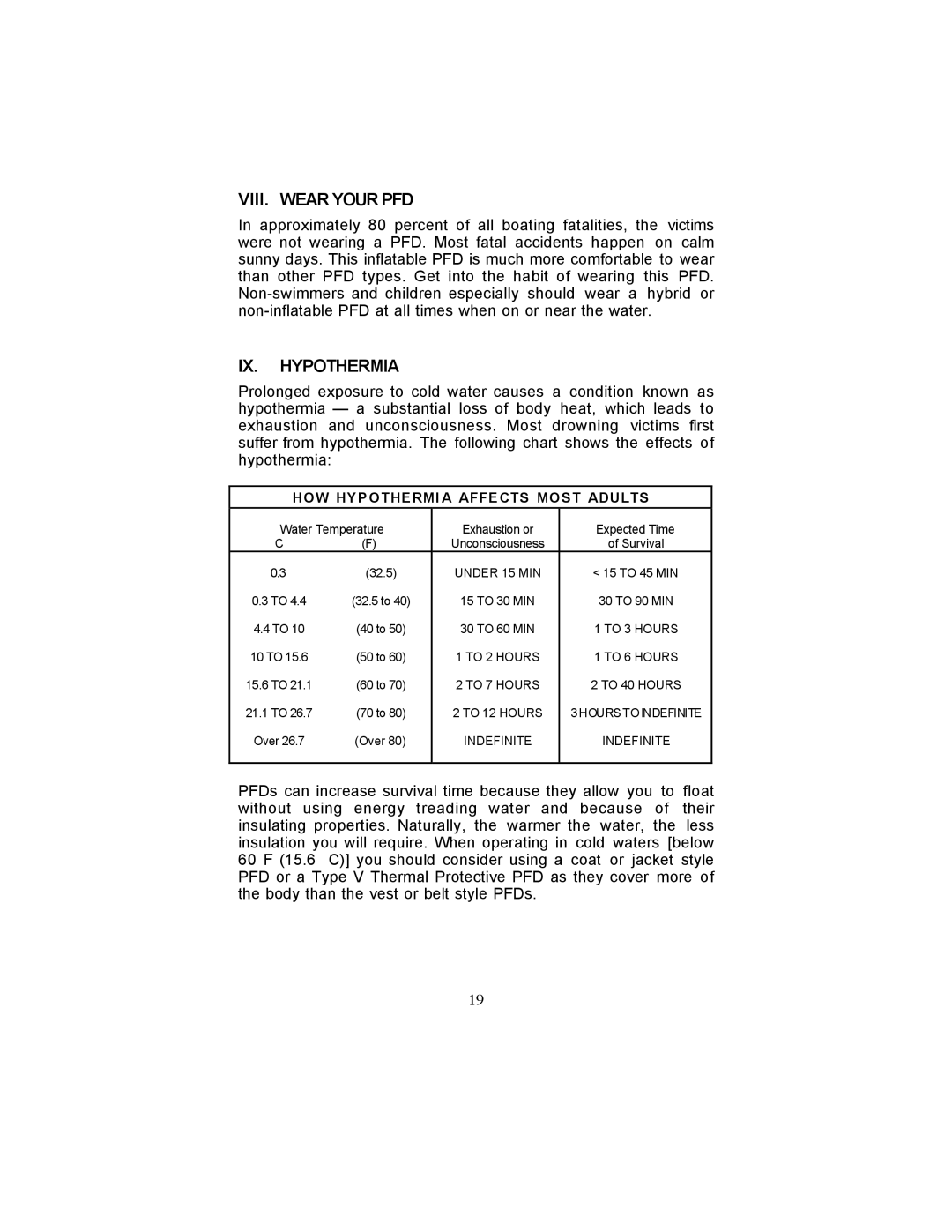
VIII. WEAR YOUR PFD
In approximately 80 percent of all boating fatalities, the victims were not wearing a PFD. Most fatal accidents happen on calm sunny days. This inflatable PFD is much more comfortable to wear than other PFD types. Get into the habit of wearing this PFD.
IX. HYPOTHERMIA
Prolonged exposure to cold water causes a condition known as hypothermia — a substantial loss of body heat, which leads to exhaustion and unconsciousness. Most drowning victims first suffer from hypothermia. The following chart shows the effects of hypothermia:
HOW HYPOTHERMI A AFFECTS MOST ADULTS
Water Temperature | Exhaustion or | Expected Time | |
°C | °(F) | Unconsciousness | of Survival |
0.3 | (32.5) | UNDER 15 MIN | < 15 TO 45 MIN |
0.3 TO 4.4 | (32.5 to 40) | 15 TO 30 MIN | 30 TO 90 MIN |
4.4 TO 10 | (40 to 50) | 30 TO 60 MIN | 1 TO 3 HOURS |
10 TO 15.6 | (50 to 60) | 1 TO 2 HOURS | 1 TO 6 HOURS |
15.6 TO 21.1 | (60 to 70) | 2 TO 7 HOURS | 2 TO 40 HOURS |
21.1 TO 26.7 | (70 to 80) | 2 TO 12 HOURS | 3HOURSTOINDEFINITE |
Over 26.7 | (Over 80) | INDEFINITE | INDEFINITE |
|
|
|
|
PFDs can increase survival time because they allow you to float without using energy treading water and because of their insulating properties. Naturally, the warmer the water, the less insulation you will require. When operating in cold waters [below 60°F (15.6 °C)] you should consider using a coat or jacket style PFD or a Type V Thermal Protective PFD as they cover more of the body than the vest or belt style PFDs.
19
